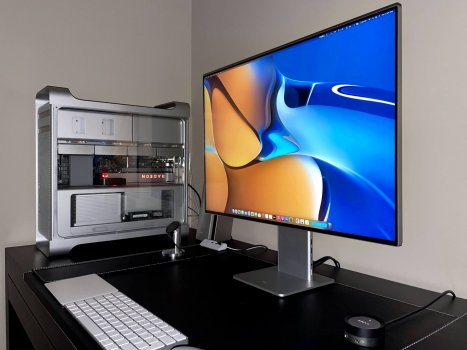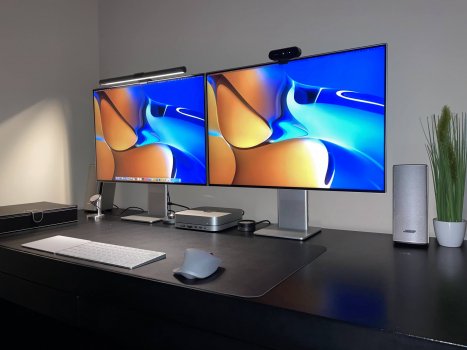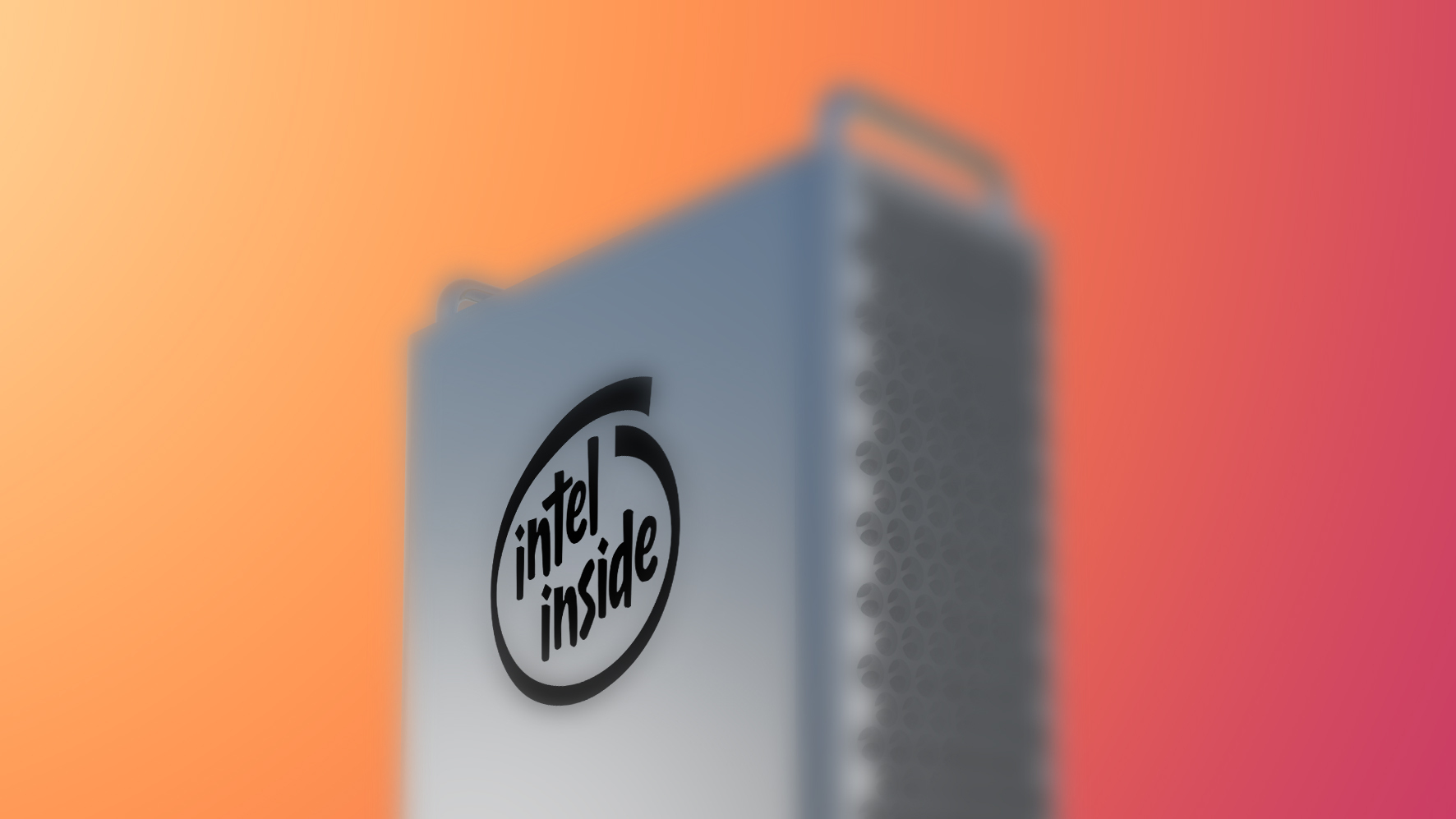Let's do some extrapolation. 2019 Mac Pro Refresh will be released this year. Assume it'll be on sale for three years. A fair estimate IMO.
If W-3300 is slow starter because of low demand problems then probably not a fair estimate. Because it is a product gap filler it probably is not going to have the usual Xeon W product life cycle. This thing isn't on "Superfin 10nm" that Gen 11 mobile (tiger lake ) was/is on. This on he revised. "plain 10nm" that didn't work so well for Gen 10 (Tiger Lake) which Intel has almost basically dropped on the client side.
In part, Apple painted themselves into a corner on the phase out of the iMac Pro because the W-2100 series they were using got dropped by Intel. It is probably not going to take Intel 3 years to phase this out if there is only tepid demand. ( the server Xeon SP Gen 3 may limp along a bit longer at lower volumes for replacement parts. )
In 2.5 years, the W-3300 isn't going to be upper half workstation market competitive. Just modestly behind on creative apps now to the TR3 and some of the higher desktop offering. Zen 3 Threadripper, Zen 4 upper desktop , and Xeon SP/ W-3400 ( Sapphire rapids ) and it will be substantively behind by end of 2022 and early 2023. Let alone 2025. A Zen5 or 6 threadripper or Lunar Lake or. Gen 5 Xeon SP die versus the W-3300 ... the notion that will be competitive at all ,even with someone with macOS blinders on , is a huge stretch. Let alone Apple's. M4 variants on the macOS side.
The "refresh" here would be just so that not embarrassingly grossly behind in performance. The 3 years for 2019 version plus roughly 3 years for a "should have been 2021" refresh probably give a range life of. 6 years for the Mac Pro they brought back to life. That is about as long as they went with the MP 2013.
If there is decent demand for the W-3300 out there and Intel is EUV supply constrained ( Intel 4) then the W-3300 might go past 3 year window on product life cycle. I wouldn't bet on that though. Intel 7 (what Alder Lake and Sapphire Rapids) are on using mostly the same fabrication machines as the old "plain 10nm". For a fixed set of fab machines which one do they want to allocate the bulk of the capacity to. The 'half broke' process node or the substantively fixed process node ?
Xeon SP Gen 3 (ice lake) was suppose to be 2H20. ... and slid all the way into 2021. W-3300 probably was "suppose to be". mid-spring-2021 and still not getting full ramp allocation. Intel isn't going to slide the lifecycle window forward. The 'burnt' time is just as likely to come off the end of the service lifetime. They'll stop where originally thought would scale down.
By then both Apple and more than half of the market agree Apple silicon Mac Pro can move forward alone.
By then? Apple went to over 50% of unit sales on M-series last year. The MBP 14" and MBP 16" just threw further gas on the fire. Probably up in the 85+% range. Pragmatically, we
are already in the phase where the installed Intel Mac user base has peaked. ( more old Intel macs going into effective retirement than being replaced by new ones). The ceremonial capper will be the throttling of the remaining Intel Mini and the iMac 27". But at that point it is basically done. Unit sales wise the Mac Pro is round off like percentages. There is about zero chance that new Mac Pro sales are making up the ground being lost by old Intel Macs being retired. At point the Intel user base would be shrinking at a steady pace.
The year is 2015. Assume Apple will be aggressive in phasing out x86-64 macOS after that and put the number three years after 2019 Mac Pro Refresh last on sale.
year 2025 probably.... And no the "count down" clock on macOS on Intel has probably already started on the basic core infrastructure level.
2022 + 7 is about 2029. That would be optimistic window. Add 3 years of shrinking security upgrades and Apple could goose the 2022 Mac Pro into 2032. (similar to how they stretched the Mac Pro 2012 to "kick the can down the road". )
Apple has put OpenGL/OpenCL/kext all on deprecated status on both macOS on M-series
and Intel. That likely will bend the curve on Intel drop offs when those finally kick over to "gone" status than it will for the M-series Macs. Once folks have to rewrite drivers for a now substantively shrinking user base , that work probably is not ever going to get done.
Apple excluding 3rd party GPU drivers from macOS on M-series is also a bad long term sign. If that is the new permanent dogma over the long term there will be a bigger bend on the curve down on Intel user base on top of the deprecation -> removed status transitions.
The faster the Intel user base shrinks the more likely that. "+7" will turn into a "+ 6". That will depend as much on user purchases as anything that Apple unilaterally does.
The year is 2028. That's also about 7 years other Intel Mac's potentially last on sale. Giving it some leeway, x86-64 macOS could well last until the dawn of 2030.
2030 In security maintenance mode? Yes. In full features macOS updates? Probably not.
Seems to me people based their guesstimate on PowerPC transition will be proven so wrong this time around. People planning to hold their investment in Apple silicon Mac Pro for 10 years+ will have ample time to watch and decide when to get onboard.
Apple doesn't promise people 10 years. The only way the Mac Pro gets to comfortable 10 year coverage from Apple is if Apple goes into "Rip van Winkle" mode on new updates for 4-6 years. A "last gasp" Mac Pro probably isn't going to have that kind of comatose mode. Maybe if the overall workstation market was in slow motion upgrade mode, but it isn't right now nor for the next 3+ years.
Apple isn't gaging their main efforts to folks looking for 10 years.
Unwinding two years of leases over time into the refurb/used market means Apple could left go of new Mac Pro in about 2 years time and probably still keep the shrunken hold out user base happy enough with replacements and modest unit additions to small clusters of remaining users.
Even more so if Apple releases two things called "Mac Pro". Even if the M-series powered on isn't a replacement. Priced $2K lower and high overlap in performance zones and the units of the Intel ones sold to the "hold outs" will be substantively smaller. Some "< 1%" product isn't going to extend macOS on Intel. It is the installed base inertia that is different from 2005-6 (and PowerPC ) transition. There are far more Intel Macs now. However, how fast the users "fade" them away isn't really a settled issue yet.
In the not so rare likelihood, by the time around the end of this decade, maybe Apple re-thinks its strategy. Mac Pro is better to stay on x86-64. lol
Given Apple is at higher PC sales rate than the Windows market last year .... you'd probably have better luck buying a Powerball lottery ticket than Apple doing any long term updates to the Mac Pro with an x86_64. The move is making Apple more money. They are
extremely unlikely to walk away from that. More likely Apple would just cut off a high slot count Mac Pro from the product line and take higher revenues over the long term.





